Abstract
The Pnoi-phone is a biomedical system that employs acoustic-based methods for diagnosing and monitoring pulmonary diseases using breath sounds. Given the global health challenges of asthma and COPD, timely and accurate diagnosis is crucial for enhancing patient outcomes.
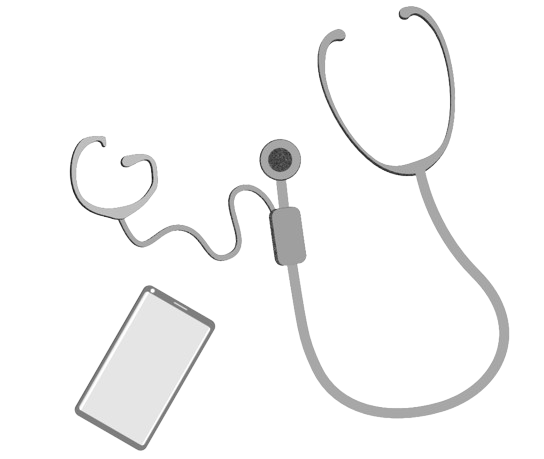
Fig: an illustration of Pnoi-phone device
Aim:
- Improve Asthma and COPD diagnosis: Combine breath sounds and PFT data for more accurate and early detection.
- Develop Pnoi-phone , a specialised biomedical device that simultaneously acquires breath sounds from various locations and uses AI models to diagnose and monitor airway diseases.
Objectives:
- Create a multimodal breath sounds corpus of patients and controls (recorded with a high-end microphone and digital stethoscope) and corresponding PFT values.
- Identify and characterise the vital features within breath sounds and PFT and build AI models to predict PFT values accurately using breath sounds.
- Design and develop a Pnoi-phone biomedical device integrated with AI models to diagnose and monitor airway diseases.
Project Overview
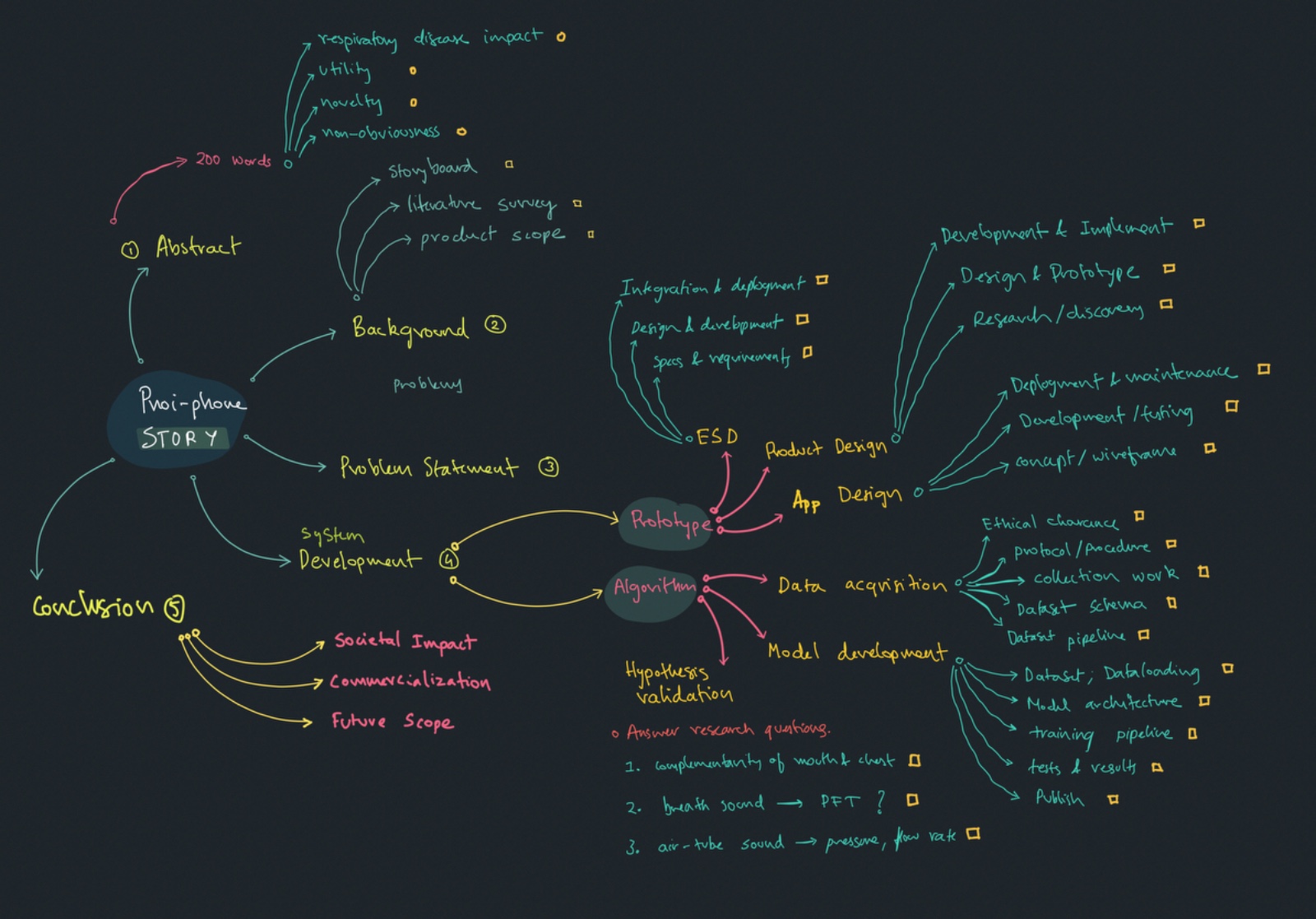
System Design
- Recording system
- App Interface system
- Model Evaluation system
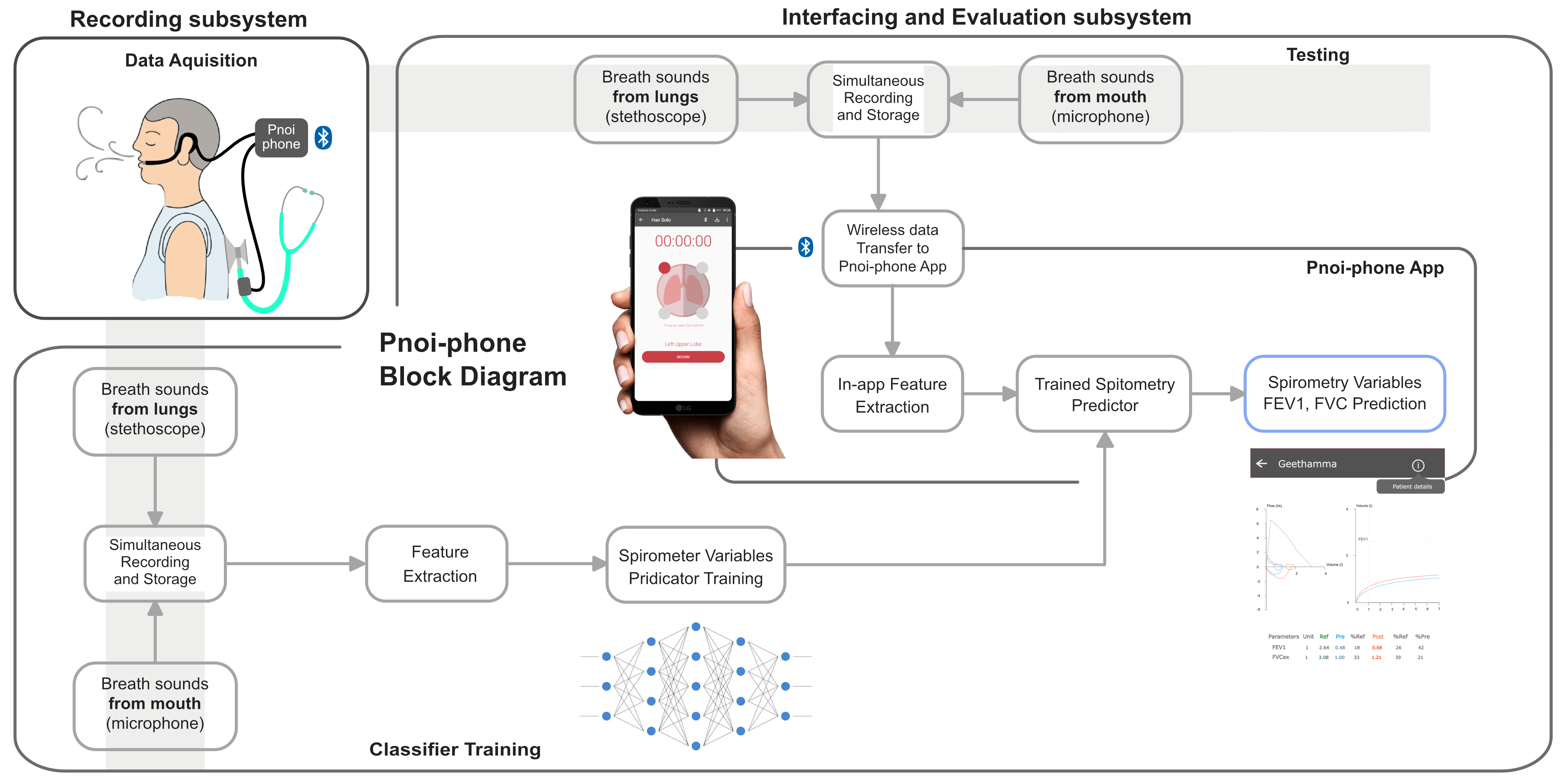
Fig: Pnoi-phone block diagram
My Roles:
- Project Lead: Conceptualised and designed the Pnoi-phone device and system, and led the project from ideation to implementation.
- Product Design: Designed the Pnoi-phone device and system, including the embedded system, data acquisition, and processing algorithms.
- AI Modelling: Developed AI models to predict PFT values from breath sounds and conducted feature engineering and selection.
- Data Collection: Coordinated the collection of multimodal breath sounds and PFT data from patients and controls.
- Embedded System Design: Designed and developed the embedded system for the Pnoi-phone device.
- Android App Development: Designed and developed the Pnoi-phone android app for data acquisition and visualisation.
Acheivements
- Pnoi-phone got placed among Top 10 in Create the Future Design Contest
- Received funding from DST Govt. of India for Pnoi-phone project
- Received funding from IEEE Bangalore Section under BSSIP'19 for Pnoi-phone project
Significance
Asthma is one of the most common chronic diseases among children worldwide. It affected an estimated 262 million people in 2019 and caused 4,61,000 deaths [1]. Meanwhile, Chronic Obstructive Pulmonary Disease (COPD) is the third leading cause of death worldwide, causing 3.23 million deaths in the same year [1]. Treatment and effective management of asthma and COPD can save lives. The underdiagnosis of respiratory diseases is a significant societal challenge that affects people globally. Many people with these diseases are not diagnosed on time, and this can lead to chronic health problems, reduced quality of life, and even premature death.
Current methods and challenges
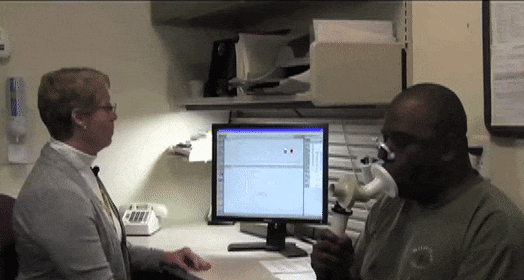
Fig: Spirometry process
Respiratory diseases are diagnosed using medical history, physical examination, and breathing tests like spirometry; a gold standard test[2]. Spirometry measures lung function to check signs of airway obstruction and other respiratory issues. However, there are challenges associated with the test, such as requiring patient cooperation, coordination, and effort to obtain reliable results. The test's repeatability is limited, and equipment malfunctions and calibration can induce variability, affecting the accuracy of the result. The complexity, high cost, and limited availability of spirometric testing hinder a significant portion of the population from obtaining an accurate diagnosis and treatment for respiratory diseases [2].
Solution
Our innovation aspires to address the issue by introducing an innovative acoustic-based method to evaluate pulmonary function test values (PFT) that can be effectively used for the diagnosis and monitoring of asthma. This method involves a device called Pnoi-phone that can capture and analyse multimodal breath sounds with AI powered systems to identify abnormal patterns indicative of respiratory diseases. It also offers real-time, non-invasive monitoring capabilities that enable healthcare professionals and patients to detect abnormalities early, track disease progression continuously, and assess treatment effectiveness. With the help of Pnoi-phone, healthcare professionals, especially in remote clinics, can accurately and effortlessly diagnose respiratory diseases, allowing for early intervention and treatment.
Proof of Concept
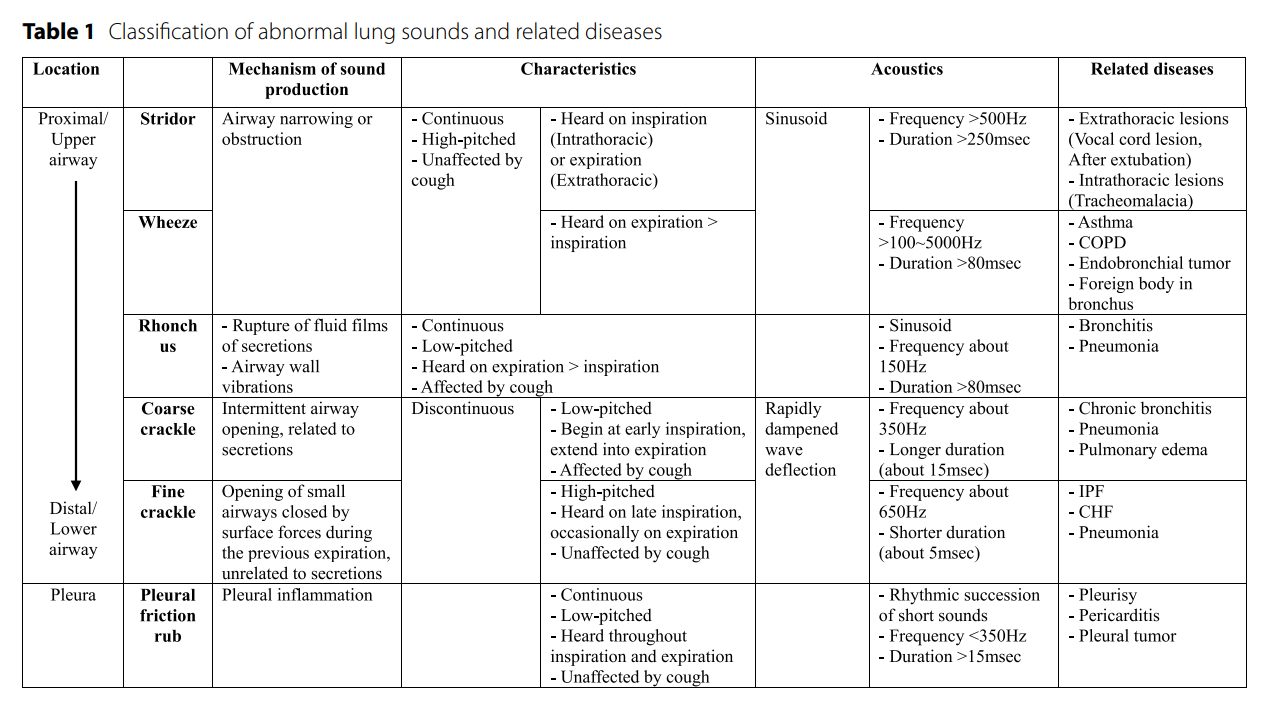
Fig: Relationship between diseases and breath sounds
In Table 1 above, the first column shows the location of the sound from the upper airway to the lower airway with the corresponding sound type in relation to the associated disease [6][7]. The sounds from these airways can provide information that encodes the sound signature of the disease. Auscultation is an essential physical examination. It is non-invasive, easy, and cost-effective. It requires minimal cooperation from the patient and can be repeated many times without any side effects, making it an optimal technique for prognosis [3].
However, it requires years of experience and specialisation to interpret the auditory information of lung breath sounds. The current technology of digital stethoscopes allows physicians to record the auscultation, enhance the sounds, and store the recording for future reference along with other useful features [4]. With these advantages on hand, it opens up a research path for exploring ways to automate diagnosing and monitoring respiratory disease using the sound of breath to provide better and scalable methods [5]. There are several studies based on the classification of auscultation sounds.
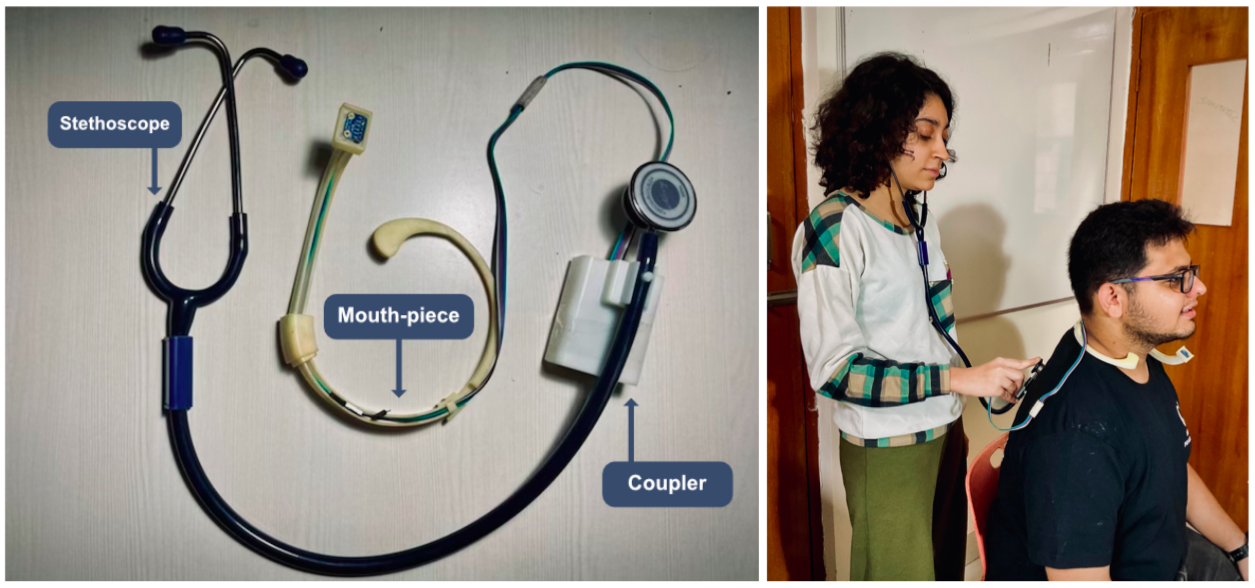
Fig: Pnoi-phone prototype in use
Successful scaling up and introducing the Pnoi-phone into healthcare would require several key considerations. Firstly, the device must be affordable, portable, and easy to use, especially in rural areas with limited resources. The cost of the device and the test will be significantly low. Additionally, the training of healthcare workers to use the device effectively and interpret the results correctly must be relatively more straightforward than that of their existing counterparts. An infrastructure to support the usage of this device for developing systems for collecting, storing, and analysing data. Enable research to ensure that the device is used correctly and that patients receive optimal care.
In summary, the Pnoi-phone represents a transformative advancement in respiratory healthcare, promising improved patient outcomes and cost-effective disease management through its unique approach, real-time monitoring capabilities, and innovative AI technology.
The project is funded by Department of Science and Technology Govt. of India, and it is developed under SPIRE Lab, IISc Bangalore in collaboration with St. John's Hospital, Bangalore.
For further details, refer
- User Research: User research conducted for Pnoi-phone to understand the user needs and requirements.
- Pnoi Corpus: A multimodal breath sounds corpus of patients and controls (recorded with a high-end microphone and digital stethoscope) and corresponding PFT values.
- Pnoi Stor: Data collection protocol, organisation scheme and storage for Pnoi-phone project.
- Product Design: Design and development of Pnoi-phone biomedical device integrated with AI models to diagnose and monitor airway diseases.
- Embedded System Design: Design and development of embedded system for Pnoi-phone biomedical device.
- Pnoi-phone App: Design and development of Pnoi-phone android app.
Glossary
- Pulmonary function test values (PFT): these refer to the results obtained from tests like spirometry (includes lung capacity, how well air flows in and out of the lungs, etc.), which can be used to diagnose lung diseases such as asthma, chronic obstructive pulmonary disease (COPD)
- Auscultation: the medical practice of listening to sounds made by the internal organs of the body, typically using a stethoscope.
- Metadata: The pnoi-phone dataset consists of metadata that includes biodata, medical history, and response to the Performa given by the pulmonologist.
References
- Global burden of 369 diseases and injuries in 204 countries and territories, 1990-2019: a systematic analysis for the Global Burden of Disease Study 2019. Lancet. 2020;396(10258):1204-22
- Vanjare, Nitin, et al. "Use of spirometry among chest physicians and primary care physicians in India." NPJ primary care respiratory medicine 26.1 (2016): 1-5.
- Bohadana, Abraham, Gabriel Izbicki, and Steve S. Kraman. "Fundamentals of lung auscultation." New England Journal of Medicine 370.8 (2014): 744-751.
- Rennoll, Valerie, et al. "Electronic stethoscope filtering mimics the perceived sound characteristics of acoustic stethoscope." IEEE journal of biomedical and health informatics 25.5 (2020): 1542-1549.
- Liu, Xiaoxuan, et al. "A comparison of deep learning performance against health-care professionals in detecting diseases from medical imaging: a systematic review and meta-analysis." The lancet digital health 1.6 (2019): e271-e297.
- Kim, Yoonjoo, et al. "The coming era of a new auscultation system for analyzing respiratory sounds." BMC Pulmonary Medicine 22.1 (2022): 119.
- Sara, Jaskanwal Deep Singh, et al. "Non-invasive vocal biomarker is associated with pulmonary hypertension." PLoS One 15.4 (2020): e0231441.